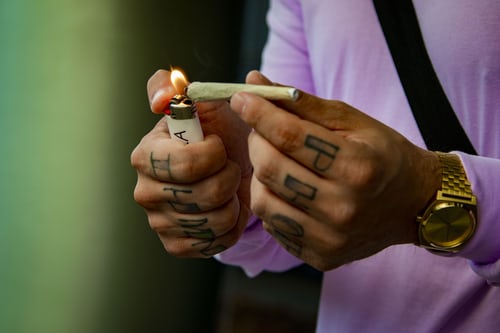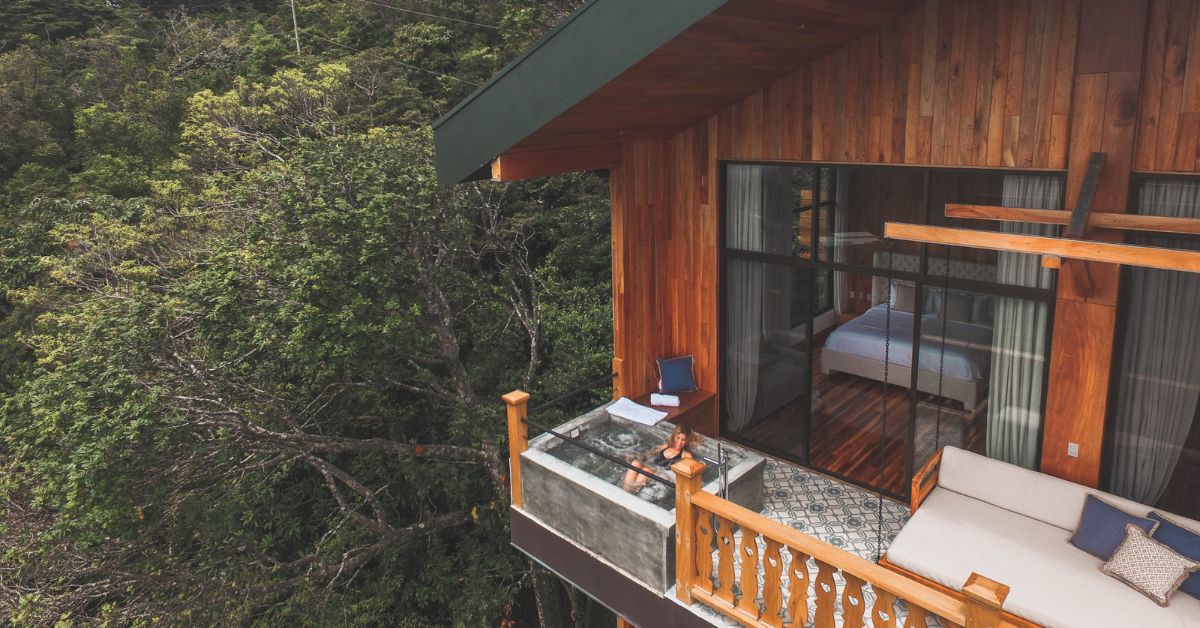Cannabidiol is forecasted to be a $61.2-billion North American market by 2027 and has been touted as a wonder drug, curing everything from inflammation to anxiety, epilepsy, menstrual pains, sleeplessness and limp, damaged hair. But how did it make its way from contraband to pet food and lotion? kind magazine editor Ben Kaplan hears from those in the know.
Dr. Mark Ware: In 1963, Raphael Mecholoulam published the structure of CBD before THC—and it got everyone excited.
Raphael Mechoulam: The chemistry of morphine and cocaine were well known at the time. I was surprised that no one was looking at the cannabis plant.
Dr. Michael Menzar: A lot of the big early work was coming from Israel, Dr. Mechoulam.
Raphael Mechoulam: I was lucky to be able to get hashish from the police. I doubt I would have been able to do that in many countries, but the Minister of Industry called a friend of his on the police force and said, ‘Can you give one of our researchers cannabis?’ ‘Is he reliable?’ the policeman wanted to know. The administrator didn’t know me. ‘Of course, he’s reliable,’ the Minister said. Then I went to the police station, drank coffee with them, and they gave me five kilos of hashish. I took them to the lab and we started to work.
Dr. Mechoulam’s work was transformative in isolating the compounds in cannabis and identifying THC as the plant’s only psychoactive compound. However, instead of a watershed moment for cannabis research, restrictive laws would hamper the progress of science.
Dr. Mechoulam: After publishing our research, I had asked for a grant to conduct more relevant cannabis research and was told, ‘No, cannabis is not relevant. Nobody uses it.’
Dr Menzar: CBD was maligned because of its association with THC. Now, acceptance is better than in the past, but CBD wasn’t widely accepted because of Reefer Madness and every ridiculous thing that goes with it.

I went to the police station, and they gave me five kilos of hashish.
Dr. Mechoulam: Nobody was interested, but you keep going. A year later, 1964, 1965, I got a call from a pharmacologist at the National Institute of Health in the United States. People in South America were using it, but nothing was happening until people in the States got interested: a senator asked NIH, do you know what cannabis does? They didn’t know anything, but heard someone in Israel was researching it. So he came over and I gave him what was then the world’s supply of THC and he took it back to the US.
Dr. Mark Ware: The big challenge in a prohibition environment where THC is illegal is: how do you conduct research when your subject is against the law?
Dr. Mechoulam: I’m not sure whether or not the NIH pharmacologist smuggled our cannabis home. Actually, maybe he did.
Dr. Mechoulam collaborated with scientists in Brazil, Canada and the United States and, in 1992, at the Hebrew University of Jerusalem, his colleagues discovered the endocannabinoid system, neurotransmitters in the body which reflected the pharmacological effects of cannabis. (More recently, the endocannabinoid system has also been discovered in dogs, but not cats).
Dr. Mechoulam: I continued working with NIH on the chemistry of cannabis and we gave the cannabis compounds names and eventually discovered the plant doesn’t make CBD, it makes CBD acid, and not THC, but THC acid—we isolated the acids and elucidated the structures, and basically did this for a long period of time. During which, a lot of people became interested and it became a topic of social interest. I did this for 25 years.
Dr. Ware: It’s important to try and cast the mind back 23 years to Those early days when we were listening to patients telling us cannabis was helping with symptoms—it was chronic pain and spasticity and appetite and HIV AIDS. Before the science, there were the stories.
Dr. Mechoulam: I decided to find out what are the compounds that are produced by our body and activate the cannabinoid receptors. Using modern methods of synthesis, we found the structure of the first cannabis compound and called it Anandamide, which means Supreme Happiness.
Dr. Ware: At the time, a bunch of research focused on THC or the THC molecule, CBD was not really envogue.
Dr. Mechoulam: Yes, we called it Anandamide because it has to do with happiness.
In 1980, Dr. Mechoulam published breakthrough research in collaboration with a Brazilian group that would prove to be a turning point for CBD. His double-blind study showed the efficacy of CBD in epileptic patients.
Dr. Mechoulam: People had said CBD might work for epilepsy, so we tested cannabis and cannabidiol for epilepsy in models with mice and it worked! We saw it was effective and so we went into humans. We had not too many patients, 16 or 18; half of them got a placebo and the others got CBD. The effects were outstanding. The eight patients that got CBD—and nothing was helping them—four had no attacks (and previously had a few attacks per day) and three got many times less. Only one was not affected! In 1980, we published that and thought maybe we can help patients, children with epilepsy, people who nothing is helping them … but nothing happened.
Dr. Munzar: The reason I got into cannabis was because of my patients. I run a big clinic on the west island of Montreal. I had all these anecdotal reports on how CBD was helping them. You just had to listen to the patients.
Dr. Mechoulam: It went like that for 30 years, until maybe 2010, then people got interested. Families, patients, they heard of this product and started giving cannabis with CBD. Of course, it worked! Then a British company that produces CBD, GW Pharma had a major clinical test in the US and fully backed up what we had seen in a large number of patients. Today, CBD is an approved drug for epilepsy.

We called it Anandamide, which means Supreme Happiness.
Dr. Munzar: The game changer was GW Pharma getting it approved by the FDA. The biggest problem with cannabis drug development was: can we get this molecule into the brain, number one, and number two: is it safe? CBD seems to have both of these components, which makes it remarkable to work with, and now the FDA has approved it.
Dr. Mechoulam: The FDA is one of the toughest institutions I’ve ever been with, they don't approve anything.
In 2013, Canada enacted the Marijuana for Medical Purposes Regulations, which added oomph to a legal Canadian medical cannabis system that began in 2001. The new laws, under Prime Minister Stephen Harper, created the licensed producer system and provided a boost for CBD research and products and opened the door in 2018 to America’s Farm Bill, which made the production, sale and usage of CBD legal in the United States. In October of that same year, Prime Minister Justin Trudeau federally legalized weed.
Dr. Munzar: I have been Chairman of the Board at HEXO since 2014. I gave them their first seed money and the reason I got into this was because of my patients. I was the only doctor in Canada on the board of a licensed producer but I knew what cannabis, if rigorously tested, could do.
Dr. Ware: There were many turning points for cannabis, but you can’t forget the big moment for CBD which was the 2014 Sanjay Gupta CNN special on Charlotte’s Web and CBD for childhood epilepsy. That brought CBD into the conversation in a big way for America: Sanjay Gupta’s mea culpa about cannabis was a huge thing.

You just had to listen to the patients.
Dr. Mechoulam: Look, we knew that many years ago. We had the science already for years.
Martha Stewart joined the Canopy team in early 2019 and opened the door for celebrities from Kirsten Bell to George St. Pierre to Gwyneth Paltrow to publicly tout the effectiveness of CBD. In the fall of 2021, research is happening apace and the sector’s greatest minds all believe that we haven’t yet seen even a fraction of the power of CBD.
Dr. Ware: CBD has given people permission to talk about cannabis again.
Dr. Munzar: When you see people like Gwyneth Paltrow taking CBD or players at the Masters chewing CBD gum, it’s remarkable for the acceptance of cannabis. Of course, my motto, as a medical doctor, is: ‘science will set you free.’ Well, we’ve studied the science, and I’m a big proponent of CBD.
Dr. Ware: Today, we can talk about cannabis, not just in the euphoric, psychoactive sense, but also cannabis as a medical remedy. CBD has given us—given science—that ability.
Dr. Mechoulam: I hope to go on working for maybe a few more years. I’m 91 at the moment. I like to work with friends, we shout at each other and drink coffee. Have I ever tried cannabis? Well, it was 1965 and some of us got THC and reported on it, but I don’t use cannabis. I barely drink wine.
The experts:
Rafael Mechoulam: The Father of Cannabis Research, according to Discover magazine, Mechoulam is a widely published Israeli organic chemist at the Hebrew University of Jerusalem, and the first scientist to discover and isolate THC.
Dr. Michael Munzar: With four decades of experience as a physician in Quebec, Dr. Munzar helped seed HEXO Corporation, one of Canada’s largest LPs. Widely published and universally heralded, Munzar is also owner and medical director of Statcare Medical Clinic in Point-Claire, Quebec, that treats over 50,000 patients per year.
Dr. Mark Ware: Executive Director of the non-profit Canadian Consortium for the Investigation of Cannabinoids, Dr. Mark Ware also practices pain medicine at the Montreal General Hospital and has been active in Canadian cannabis research since 1999. He is the Chief Medical Officer of Canopy Growth.







